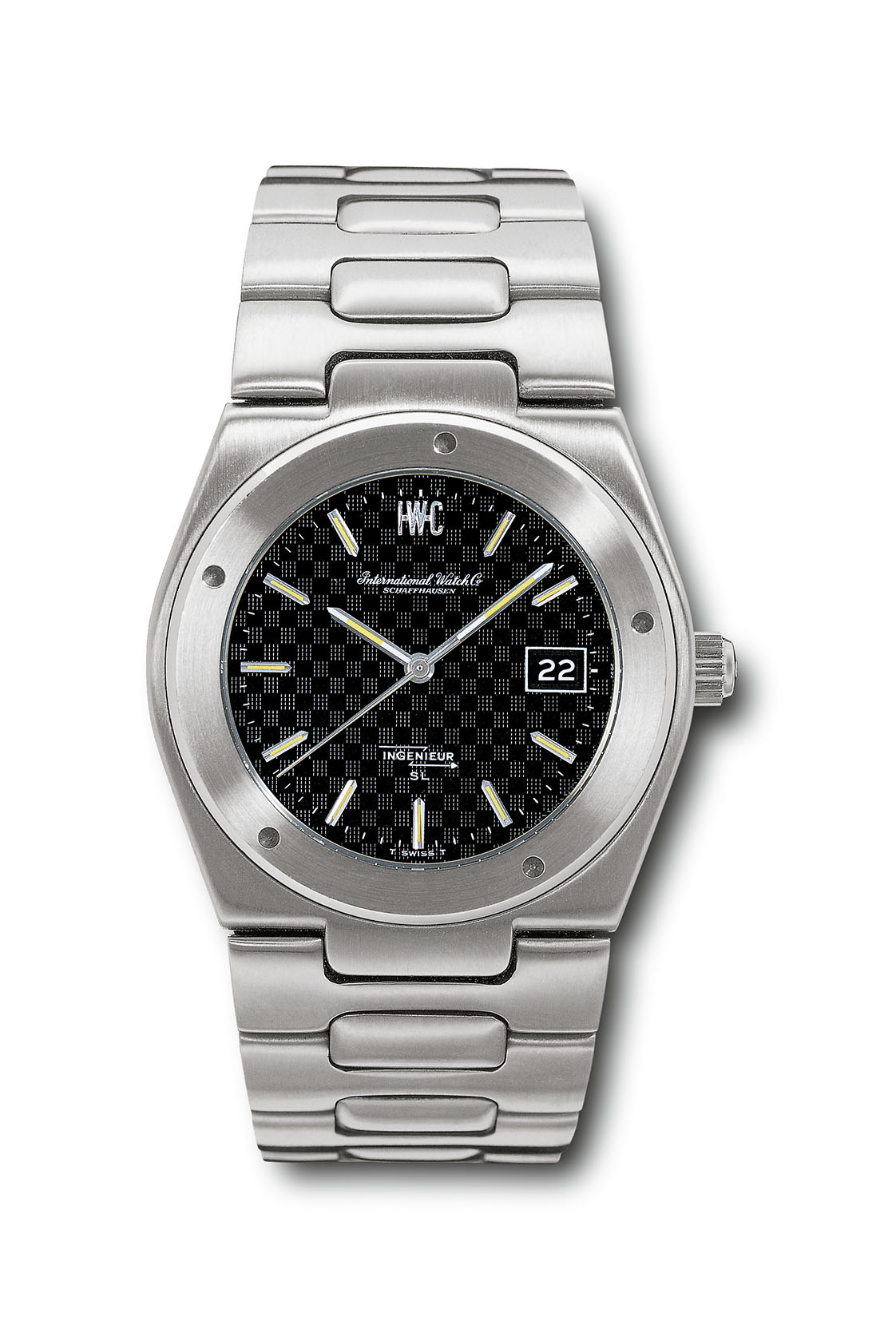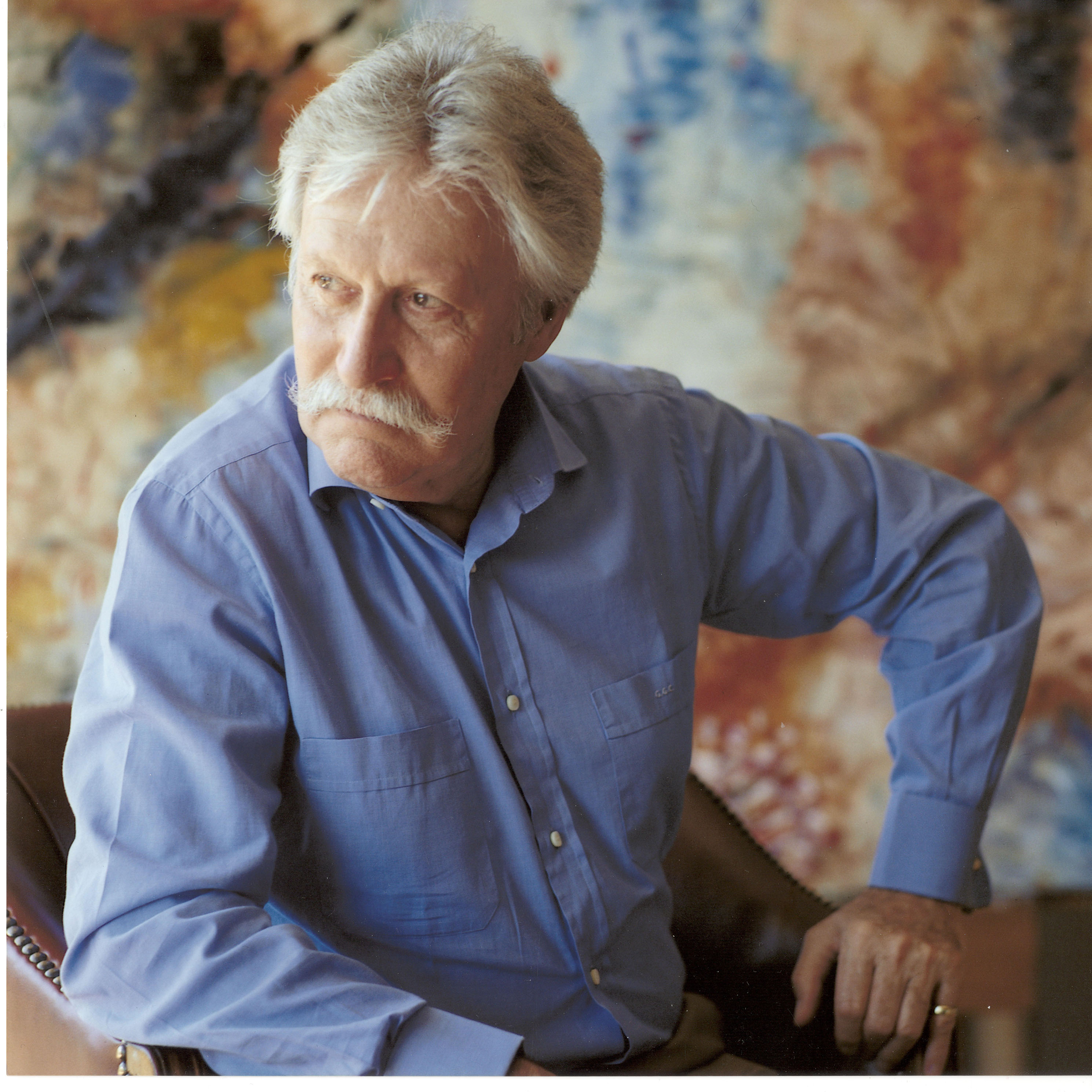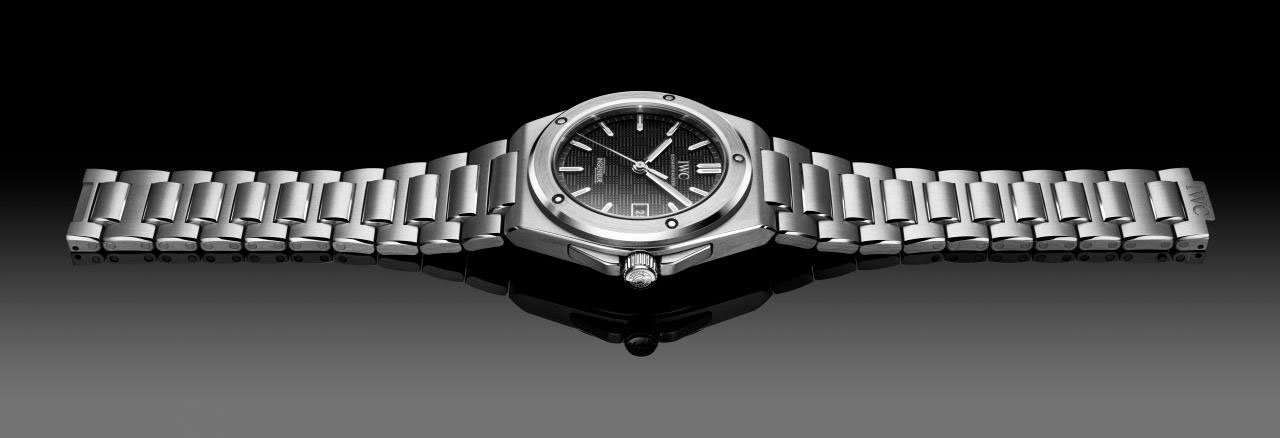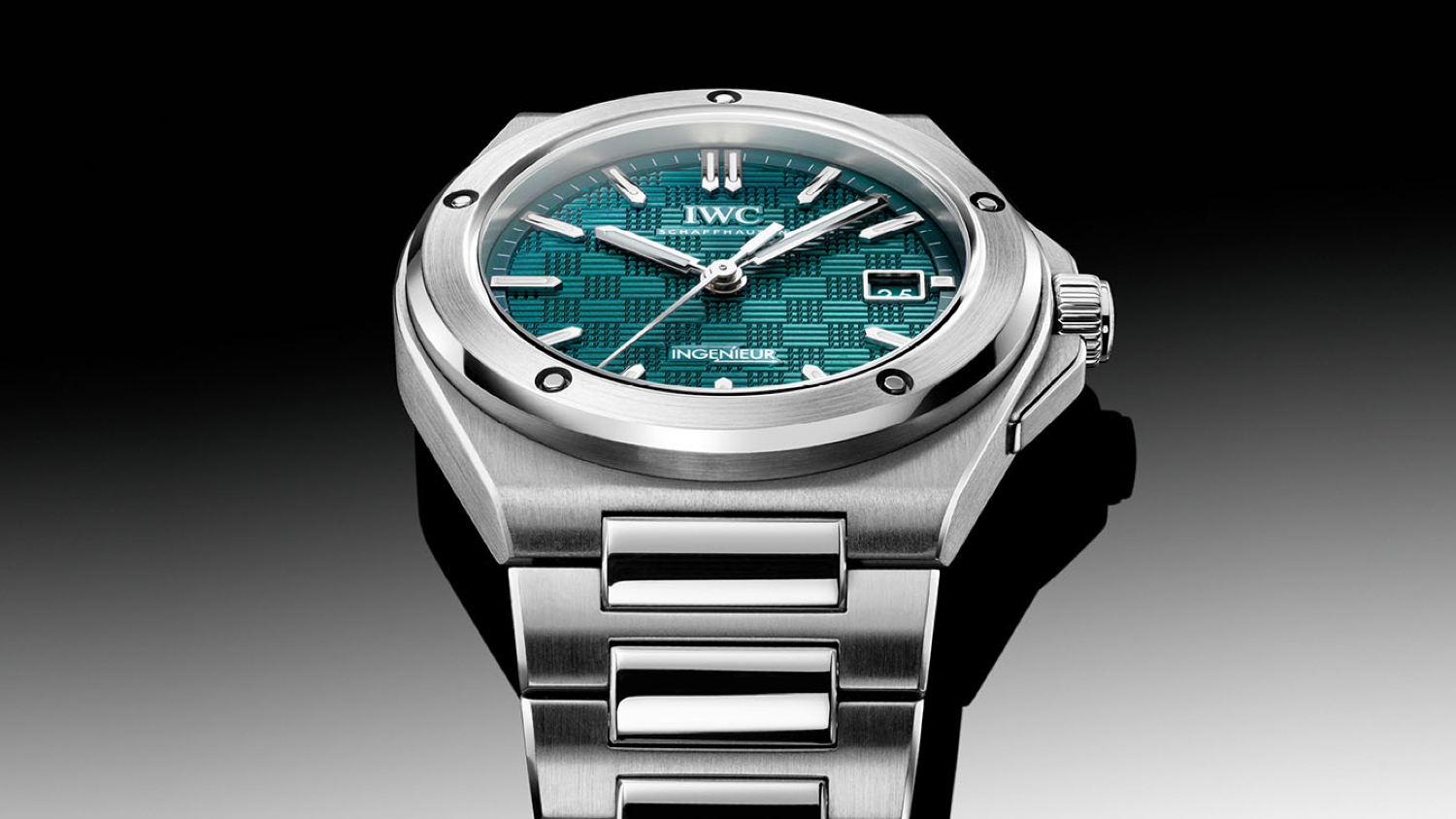There are few watch designers who have had the kind of impact on watchmaking Gérald Genta has had. In the 1970s, he gave birth to the genre of the steel sports watch, which today enjoys unprecedented popularity. He started with the Royal Oak in 1972, and in 1976 created the Nautilus. That same year, he worked with IWC Schaffhausen to make the 40mm stainless-steel Ingenieur SL Ref. 1832, which became an instant hit with its bold aesthetic codes like the screw-on bezel with five recesses, a structured dial, and integrated H-link bracelet. The model was nicknamed ‘Jumbo’ because of its impressive case size.
The model was, however, discontinued in 1983. This year at Watches and Wonders, IWC has expanded its Ingenieur collection with three remarkable new timepieces in 35 mm with new material (ceramic and gold), and dial colours.
In early 2023 it saw a resuscitation, with IWC unveiling a re-interpretation of the Gérald Genta-designed Ingenieur. The brand’s biggest release of the year, it also heralded the new direction that this line is set to take.
The clean and sophisticated Ingenieur Automatic 40 has a multilayer appeal. The timepiece delighted watch aficionados with its slick, perfect technical design codes—everything is more streamlined, compact, seamless and, well, modern. “I couldn’t name a single aspect that I like most,” says Christian Knoop, Head of Design, IWC Schaffhausen. “I am really pleased with the outcome of the whole project, and I think the Ingenieur Automatic 40mm gets as close as it can to being a versatile modern sports watch.”
 Ingenieur SL Ref. 1832
Ingenieur SL Ref. 1832
The four iterations of the IWC Ingenieur Automatic 40mm introduced include three stainless-steel references (Ref. IW328901, Ref. IW328902, and Ref. IW328903, with black, silver, and aqua dials), and one titanium model with a grey dial. The new designs seek to eliminate the limitations of Genta’s Ingenieur SL. Every feature of the reference has been given a little more attention—the dial, markers, and hands are now bolder; the bezel has more depth; and the bracelet has a special central link for better ergonomics. The 40mm watch, with a soft-iron case to protect it from magnetism, is in a diameter intentionally chosen by the brand. “The 40 millimetres is a highly versatile diameter and a size that both women and men enjoy wearing,” explains Knoop. The case is tapered at the edge for a smooth look, and the bezel is hand-finished, polished, and more three-dimensional with five polygonal screws on it, aligned to 12 o’clock for a more symmetric look.
The dial has also been reworked, featuring a more prominent dot and dash texture. The hour markers and hands have been made broader for legibility—there is a double hour marker at 12 o’clock and the brand’s logo below that. In Genta’s model, ‘IWC’ rested here. There is a date window at 3. While Genta’s Ingenieur did not sport crown protectors, it is a detail found in all four new iterations, done to make the timepieces look more compact and closed. The case is topped with a convex sapphire glass with anti-reflective coating on both sides, and there is a closed caseback; beating inside is the automatic Calibre 32111, boasting a power reserve of 120 hours.
 The H-link bracelet of the new design
The H-link bracelet of the new design
Furthermore, the functional design of the integrated, narrowed H-link bracelet, with a special middle-link attachment, makes sure it lands perfectly on your wrist. The timepiece is water resistant up to 100 metres.
The brand spent considerable time perfecting the finishing of the design. There are high-level polished and satin-finished surfaces for the case, bezel, and bracelet; all-in-all, the final touches on this 21st century steel sports watch are sleek, clean and ergonomic. The overall changes naturally beget the question, what was the starting point of the redesign? “It was an open secret that we were contemplating bringing back the Ingenieur design from Gérald Genta. However, it was out of the question for us to issue a remake of Genta’s Ingenieur SL. More so, we took the Reference 1832 as the starting point to engineer a completely new automatic model with perfect case proportions and ergonomics, a high level of detail and finishing, and equipped with modern movement technology,” says Knoop.
History
Gérald Genta’s Ingenieur SL Ref. 1832 is not the first Ingenieur in the IWC’s arsenal—Ingenieur Ref. 666 debuted in 1955, featuring the brand’s first in-house automatic calibre, and was crafted for professionals whose line of work included exposure to the magnetic fields, like doctors, technicians, pilots, chemists, physicists, and engineers. The reference featured a 36mm round, soft-iron case for anti-magnetic properties and a dial with applied Arabic numerals and hour markers, and dauphine hands. The watch was powered by Calibre 8531, the brand’s first in-house developed automatic movement with the Pellaton winding system and was fitted with a multi-link steel bracelet.
 Gérald Genta
Gérald Genta
After more than a decade, the brand came up with Ref. 866 in 1967 for the new Calibre 8541, and also introduced a date window at 3 o’clock. Cut to another decade later, the idea of the Ingenieur was presented to Gérald Genta by IWC when Hannes Pantli, then salesman in charge of Northern Europe, saw the need to have several new steel watches to complement the 1811 Yacht Club, IWC’s first diving watches. Built during the Quartz Crisis, the timepiece was subtle and dressy and featured a 40mm soft-iron case incorporated with a screw-on bezel with five recesses and a knurled crown at 3H position. The watch had a structured dial with hour markers and hands, a date window at 3 and ‘IWC’ written at 12 o’clock along with International Watch Co. Schaffhausen below it. The model was equipped with automatic Calibre 8541 and was complemented by a little circular-designed sculpted H-link bracelet. IWC produced six different references in varying combinations of metals, offering both automatic and quartz movements to serve customer requests.
“The legendary timepiece belongs to the so-called ‘holy trinity’ of Gérald Genta’s integrated sports watch designs from the 1970s,’’ says Knoop. Inspired by that, the brand recreated a 34mm timepiece in 1983; it was named “Skinny Ingenieur” by collectors. There was also a 34mm Ingenieur 500.000 A/m released in 1989, which had the potential to withstand 3.7 million A/m in an MRI scanner.
 The compact look of the new Ingenieur with two crown protectors
The compact look of the new Ingenieur with two crown protectors
Genta’s design codes were employed in the 2005 Ref. 3227, which featured a new Calibre 80110 with a shock absorber system. In 2013, the brand became the Official Engineering Partner of the Mercedes-AMG Petronas F1 team and unveiled the Ingenieur Constant-Force Tourbillon, Ref. 590001; the timepiece was introduced with new case materials—platinum and ceramic. Later, the brand also released Ingenieur Perpetual Calendar Digital Date-Month, Ref. 379201, and Ingenieur Automatic Ref. 3239—the latter was the first Genta design inspired model to appear with crown protectors. In 2017, IWC unveiled the Ingenieur Chronograph.
All the aforementioned models have analogous features like the five-screwed bezel and round case, from the first Gérald Genta’s Ref. 1832. And then the brand made the decision to revisit the original Gerald Genta Ingenieur design for 2023. “When we started this project, we had no idea how much time it would take. In retrospect, this was probably the most complex and challenging engineering and development project I have ever embarked on during my time at IWC. It is astonishing how many prototypes we created to ensure we got it just right,” says Knoop. “Judging from the reactions of our clients, and including the feedback we got from Evelyne Genta, Gérald Genta’s widow, I think the Ingenieur Automatic 40 does not disappoint. It is not every day that a designer gets the chance to work on reinterpreting such an icon.”
 Christian Knoop, Head of Design, IWC Schaffhausen
Christian Knoop, Head of Design, IWC Schaffhausen
Only few designs have the potential to sculpt history like the Ingenieur SL. And its latest iteration aspires to carry forward that legacy. Does Knoop think Ingenieur will evolve in future? “In this era [1950s], people were fascinated by technology, and engineering embodied innovation, progress, and prosperity. This sense of optimism and the belief in technical progress was also expressed in the name ‘Ingenieur’—the French word for ‘engineer’—and it still forms an integral part of the Ingenieur’s DNA today. I believe this notion of an ‘engineer’s watch’ will continue to shape how we develop this collection,” says Knoop.
Images: Courtesy Brand
This story appeared in WatchTime India's Sports Special 2023 issue.










